Porsche’s brilliant Boxster continues to shine as it enters its twilight years
Four generations of Porsche Boxster have redefined the open-topped sports car. As electrification looms, we check out what could be the last – and best – of the current line
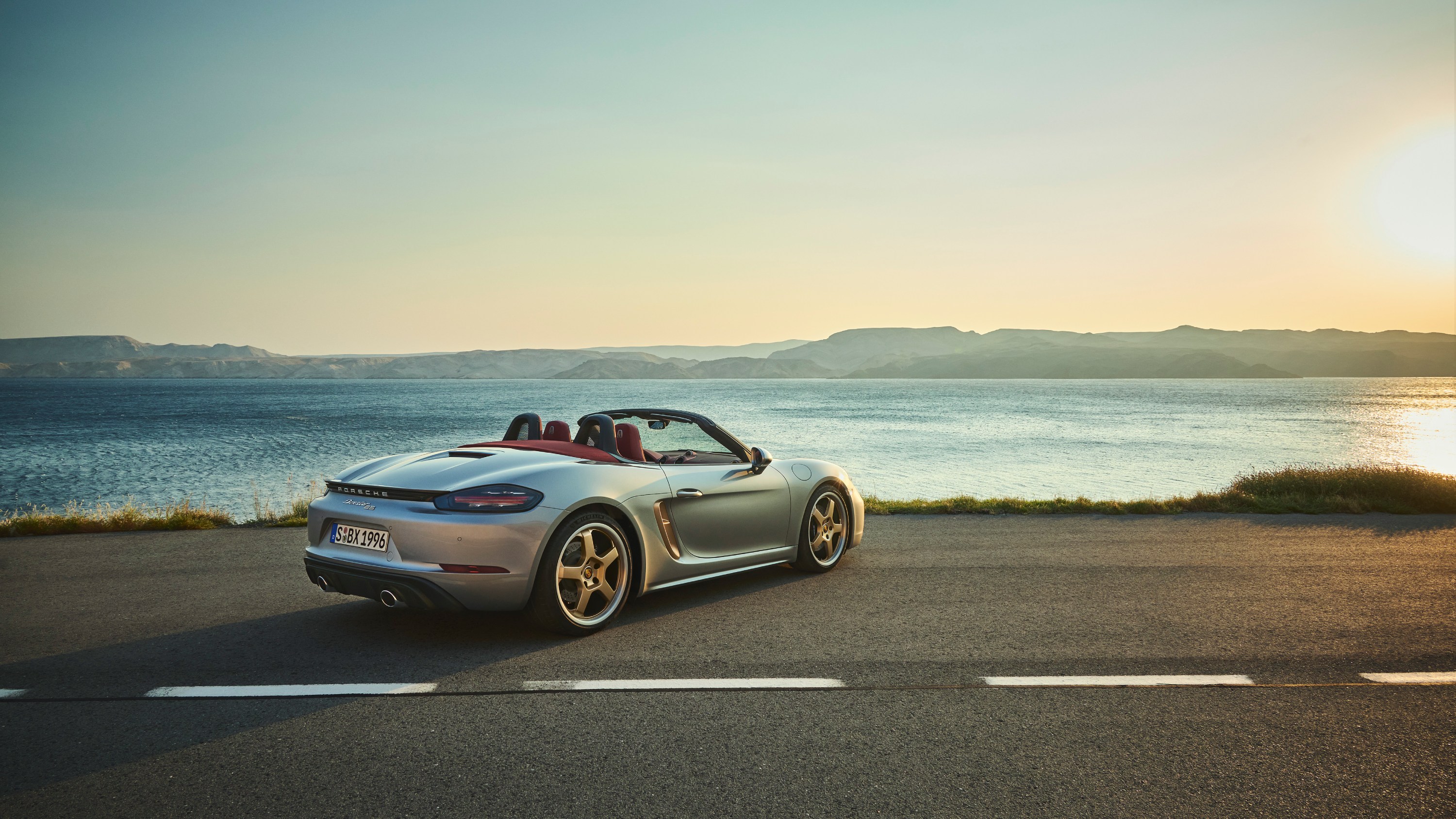
The Porsche Boxster is something of an automotive evergreen, the Platonic ideal of a compact two-seater open sports car that simultaneously harks back to the company’s origins while also remaining its purest statement of sporting intent.
These days, the Boxster is known as the 718, a simple designation along the lines of its older sibling, the 911. 2023 marks the 911’s 60th birthday; the 718 Boxster is a far more recent arrival. Although the 911 remains Porsche’s defining model, this most iconic of sports cars gets more sophisticated and complex with each passing generation. The Boxster was a way of getting back to basics.

Porsche Boxster concept sketch, 1992
The first hint of the new model came in early 1993, with the reveal of the Boxster concept at the Detroit Motor Show. With a new name that combined Porsche’s four-cylinder ‘Boxer’ engine with ‘Roadster’, the elegant silver-painted concept car was the first public manifestation of two years’ worth of design work.
This was the height of the retro-future era of car design, but while the Boxster certainly harked back to some Porsche classics – notably the 1950s-era 550 Spyder and 718 RS 60, not to mention the original 356 Speedster – it was exceptionally pure in its form and detailing. A rapturous reception from the auto press and potential buyers convinced the company that any production model would have to bear a striking similarity to the concept, or risk disappointment.
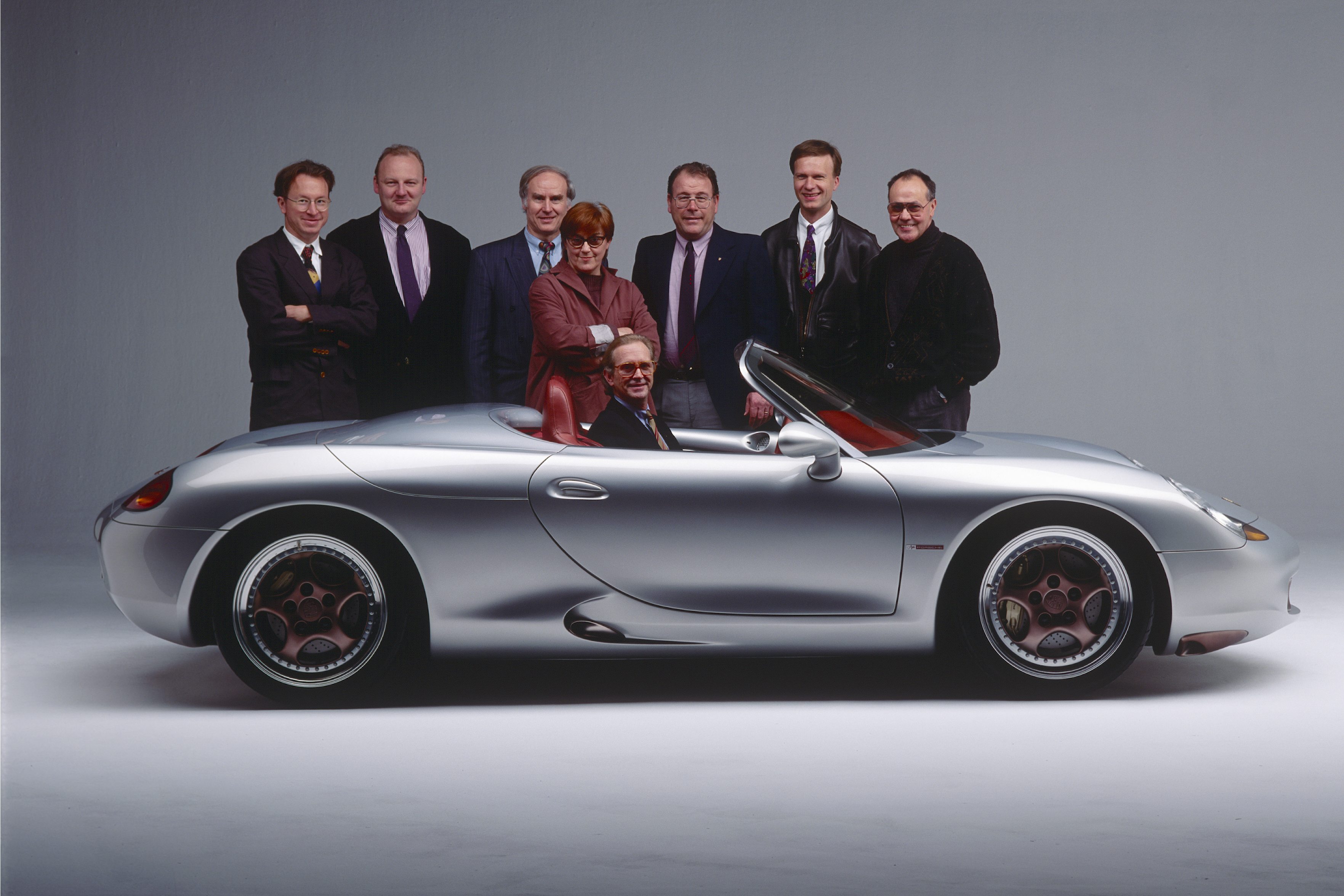
Porsche Boxster concept, 1993, with Harm Lagaay, head of Porsche's Design Department, in the driver's seat
One of Porsche’s biggest worries for the Boxster was that it would cannibalise sales from the larger and more expensive 911. While the latter’s diverse model range runs the gamut from open-top sports cruiser to all-out supercar and quirky off-roader, the Boxster has always had a rather more singular character. Convertibles aren’t to every market’s taste, but the baby Porsche’s key target – America – has always been keen on open-topped cars. It was the American market that boosted the company’s fortunes in its earliest days, and so it proved with the Boxster.
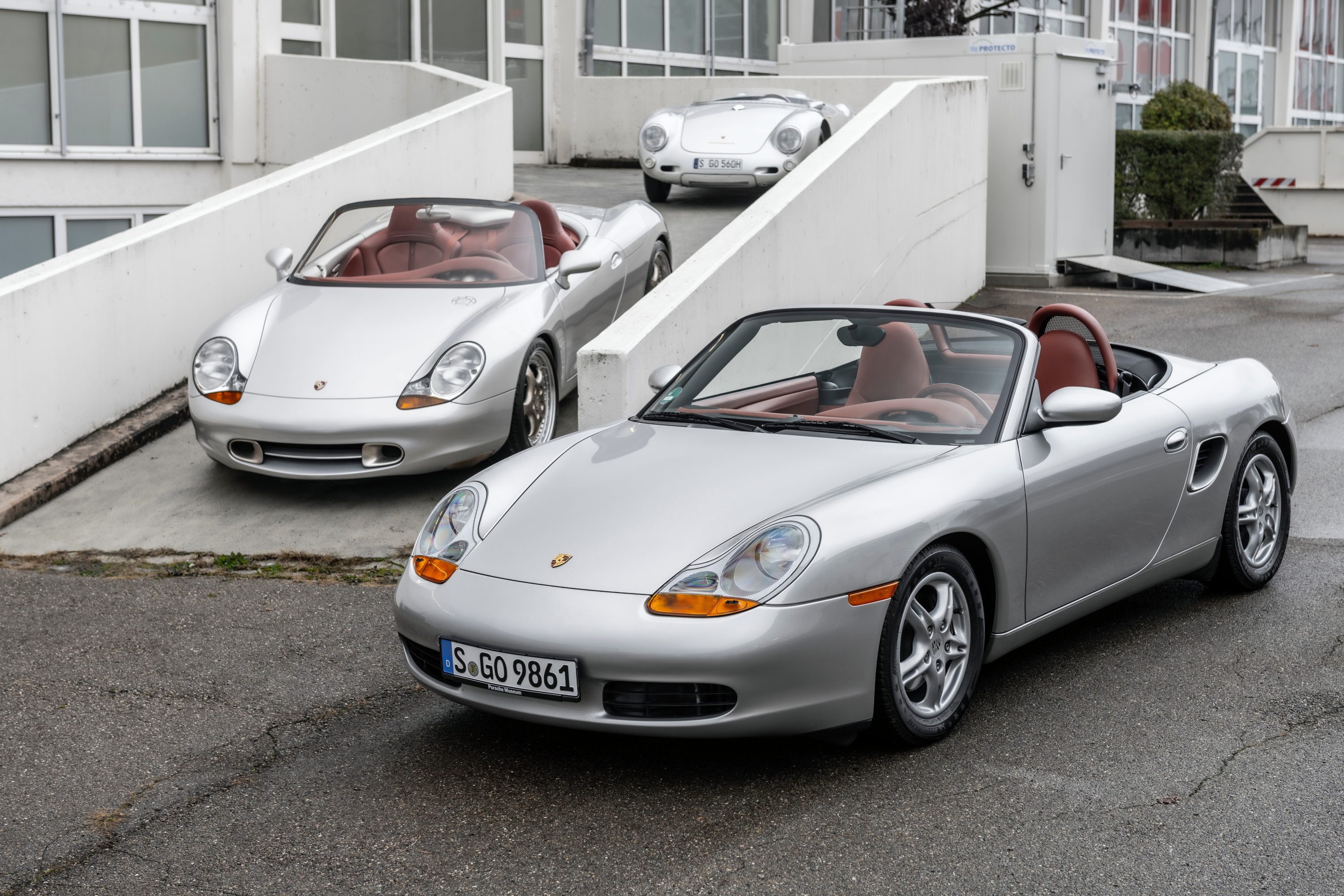
The first generation Porsche Boxster in front of the Boxster Concept and the 550 Spyder from 1953
When the production car finally arrived, in spring 1996, it was an immediate success, opening up a new audience to the company at a time of declining sales and perilous finances. While the Boxster, and its sibling car, the closed-top Cayman that launched in 2005, were briefly best sellers, their key importance was in reiterating Porsche’s commitment to the sports car. It was the arrival of the Cayenne SUV that really reversed the company’s fortunes.
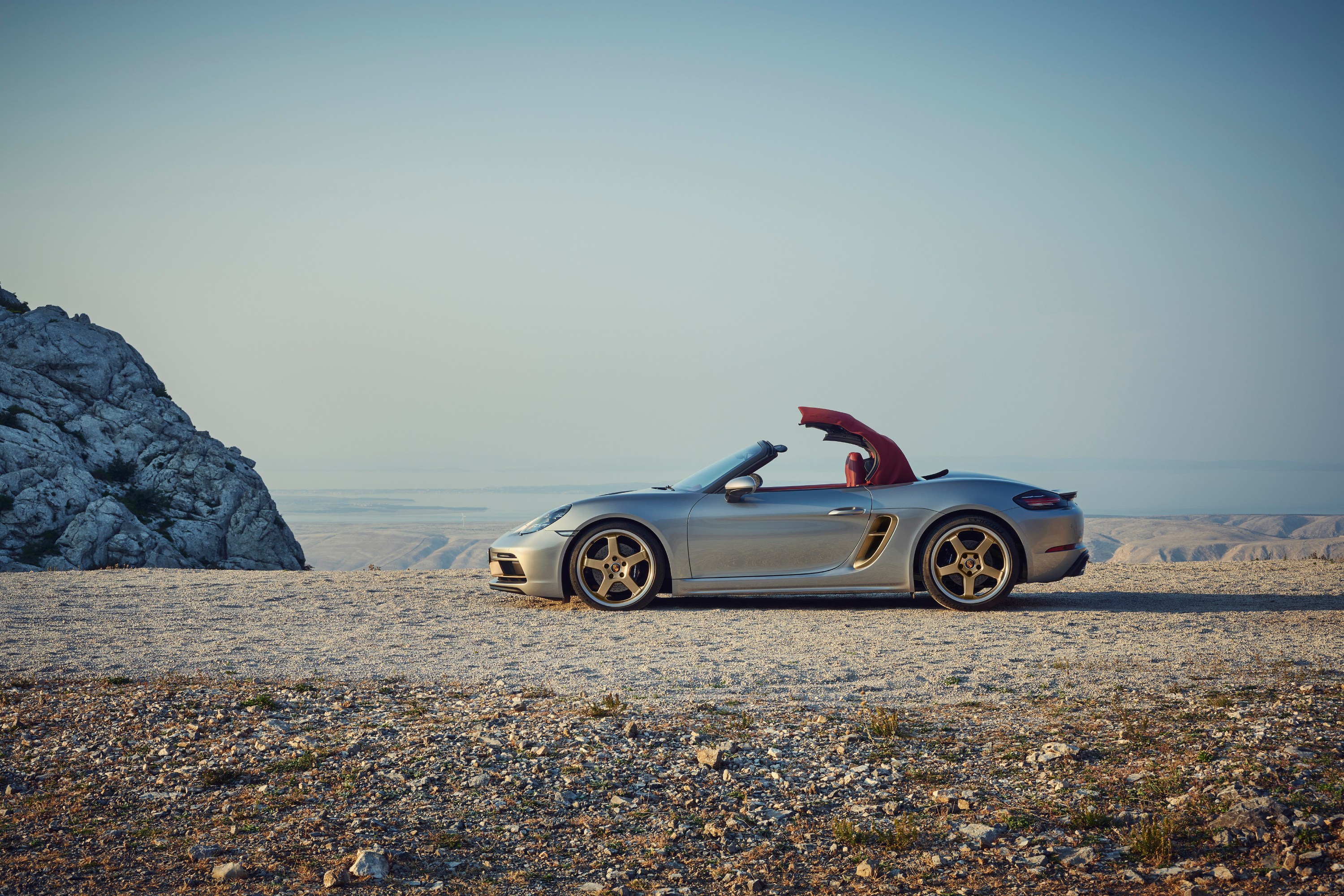
Inside the Porsche 718 Boxster
But that’s another story. The Porsche Boxster is now in its fourth generation, with around 400,000 sold to date. We’re happy to report that this latest iteration is just as delightful as the original. Few cars feel as well-balanced and so dynamically sorted as this little convertible. As tested in GTS 4.0 trim, with more sporting accoutrements and upgrades, it shares its spirited verve with plenty of power and practicality. It’s a strict two-seater, with a well-insulated hood that fits snugly over the immaculately laid-out cabin. Everything falls easily to hand, and the excellent visibility and perfect driving position make this a car you can easily use every day.
Receive our daily digest of inspiration, escapism and design stories from around the world direct to your inbox.
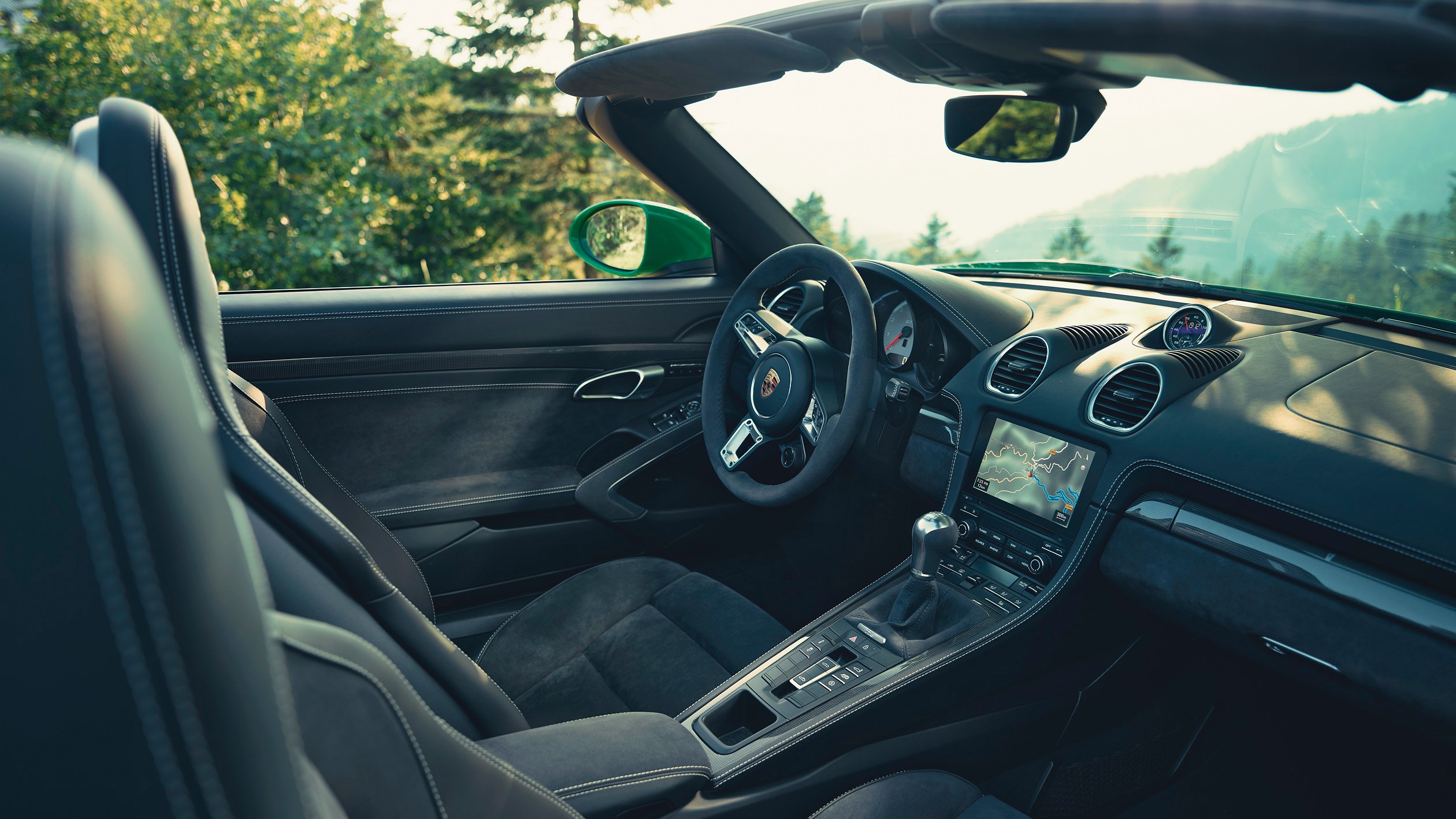
Porsche 718 Boxster GTS 4.0
Porsche’s faith in sports cars will be tested in the coming years. Up until now, the company’s electrification strategy has been focused on larger cars like the Taycan and the forthcoming Macan EV, as well as hybrid versions of the Panamera and Cayenne. Hybridising or even electrifying the tightly packaged 911 was seemingly not an option.
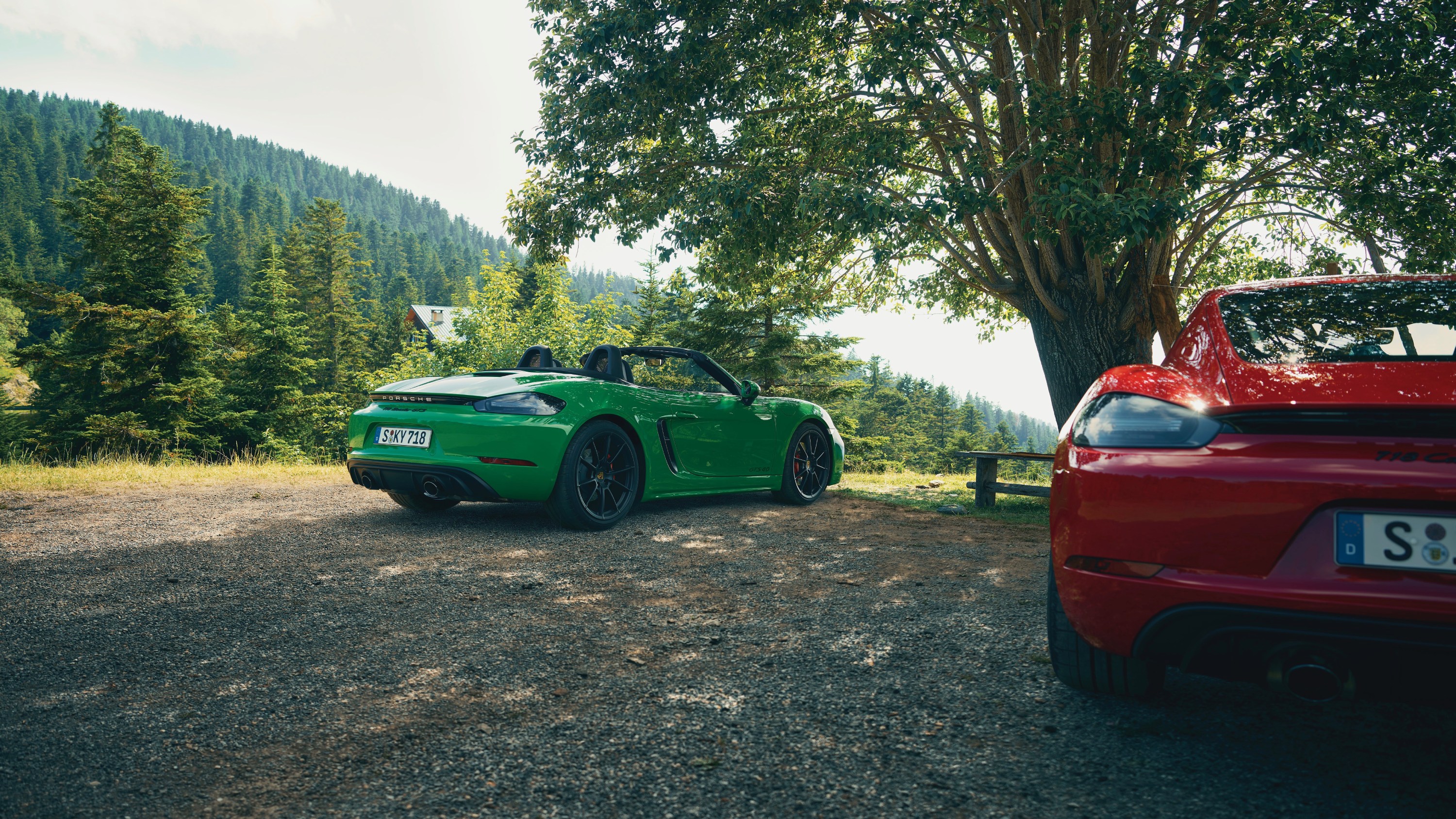
Porsche 718 Boxster GTS 4.0 alongside the Porsche 718 Cayman (right)
Porsche Boxster and an electric future
Current intelligence suggests that a 911 hybrid will ultimately see the light of day, the culmination of a development project that has taken well over a decade. At around the same time, the 718 series will be re-born as pure electric sports cars, a market sector that is currently sorely lacking. How do we feel about that? For purists, the idea will take quite some getting used to.
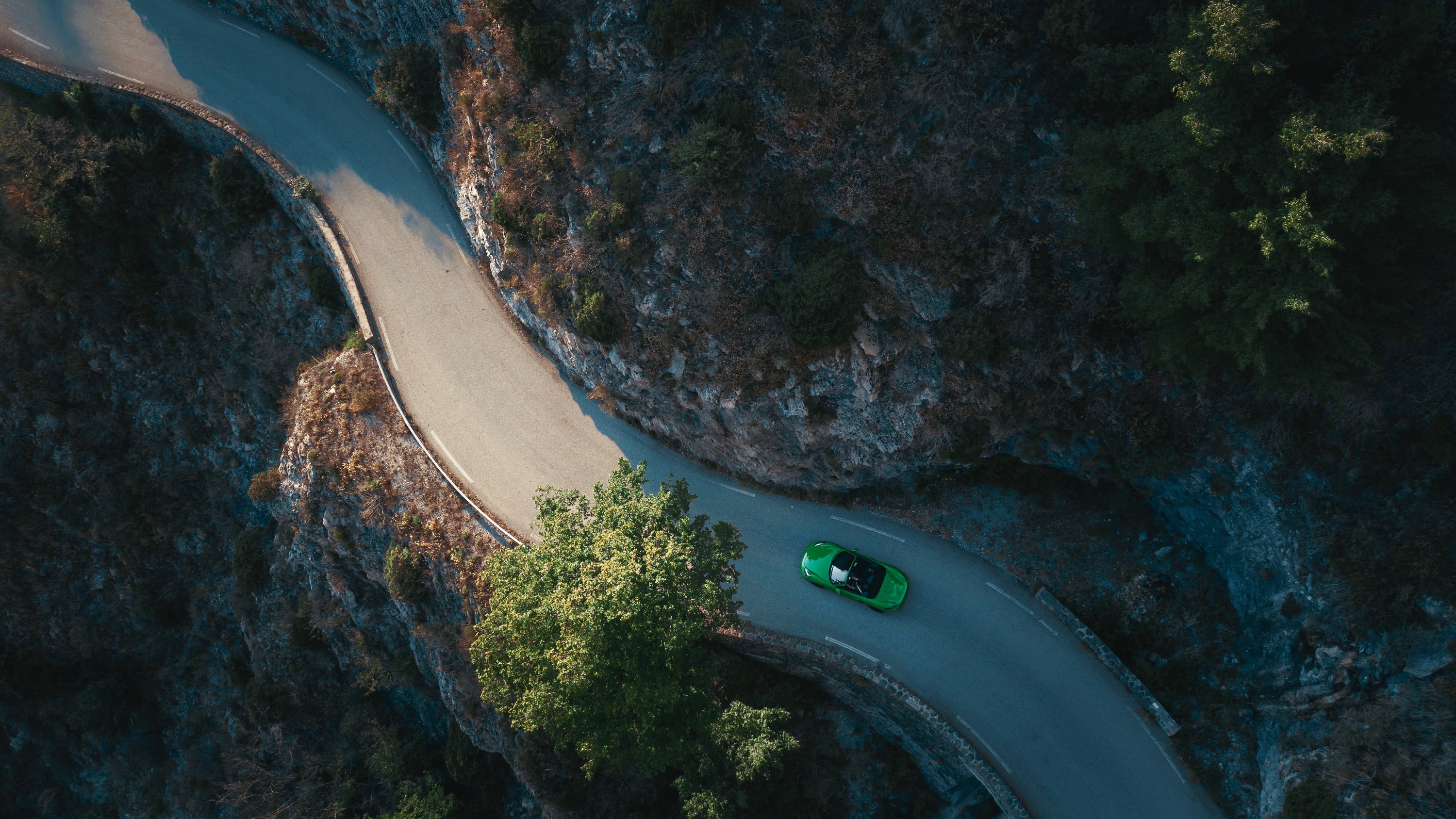
Porsche 718 Boxster GTS 4.0
For Porsche, it’s a commercial necessity: companies that cater to raw desire rather than day-to-day need have a vested interest in maintaining the mobility status quo. For that reason alone, Porsche can’t allow the electric Boxster to disappoint. In the 718, it has set itself exceptionally high standards to exceed.
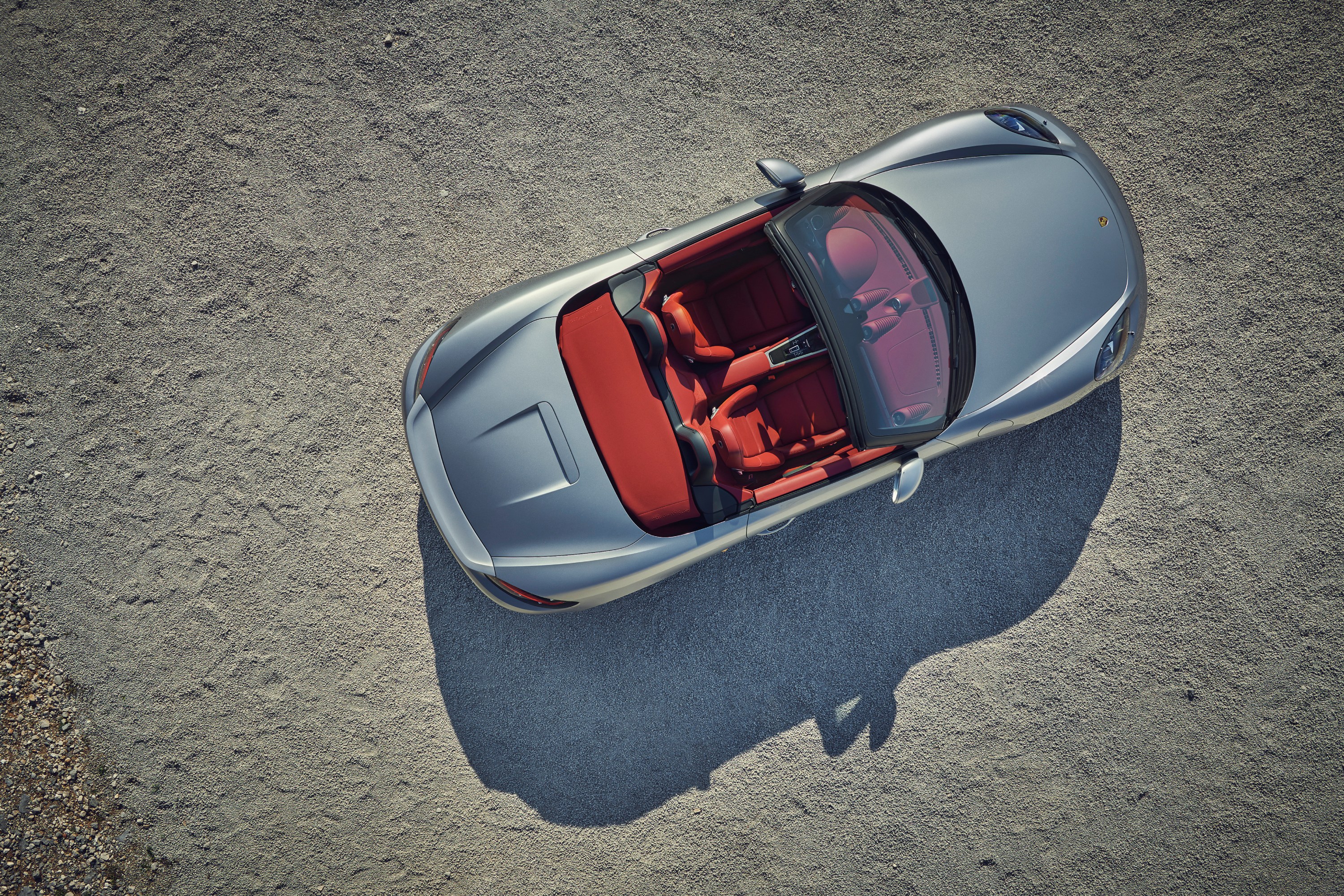
Porsche 718 Boxster GTS 4.0, from £66,340
Jonathan Bell has written for Wallpaper* magazine since 1999, covering everything from architecture and transport design to books, tech and graphic design. He is now the magazine’s Transport and Technology Editor. Jonathan has written and edited 15 books, including Concept Car Design, 21st Century House, and The New Modern House. He is also the host of Wallpaper’s first podcast.
-
 Curvilinear futurism meets subtropical beaches at Not A Hotel’s ZHA-designed Okinawa retreat
Curvilinear futurism meets subtropical beaches at Not A Hotel’s ZHA-designed Okinawa retreatZaha Hadid Architects has revealed the design for the first property in Not A Hotel’s futuristic new Vertex collection, coming soon to southern Japan
-
 Gorden Wagener leaves the helm of Mercedes-Benz design after 28 years with the company
Gorden Wagener leaves the helm of Mercedes-Benz design after 28 years with the companyThe German designer is stepping down from the role of chief design officer at Mercedes-Benz. We look back at his influence and impact on the world of automotive and luxury design
-
 These Christmas cards sent by 20th-century architects tell their own stories
These Christmas cards sent by 20th-century architects tell their own storiesHandcrafted holiday greetings reveal the personal side of architecture and design legends such as Charles and Ray Eames, Frank Lloyd Wright and Ludwig Mies van der Rohe
-
 New Porsche Cayenne Electric makes a case for a sporting life with lashings of technology
New Porsche Cayenne Electric makes a case for a sporting life with lashings of technologyThe next-gen Cayenne gets its first all-electric model, a mighty SUV that’s also the first Porsche with wireless charging
-
 All the new electric cars and concepts revealed at Munich’s IAA Mobility 2025
All the new electric cars and concepts revealed at Munich’s IAA Mobility 2025Munich’s alternative motorshow is now in its third iteration, combining a traditional exhibition space with a conference and large-scale public activations on the streets of the city
-
 KAMManufaktur transforms the 1960s-era Porsche 912 into a refined restomod GT
KAMManufaktur transforms the 1960s-era Porsche 912 into a refined restomod GTThe KAMM 912T is a restomod Porsche for the more discerning collector, a rebuilt and re-engineered car that favours analogue feel and simplicity over all-out power
-
 All the best bits from Goodwood Festival of Speed 2025
All the best bits from Goodwood Festival of Speed 2025As car makers switch their allegiance to the sunny West Sussex countryside as a place to showcase their wares, a new generation of sports cars were sent running up that famous hill
-
 This Porsche surfboard collaboration captures the spirit of 1970s Southern California
This Porsche surfboard collaboration captures the spirit of 1970s Southern CaliforniaThe Porsche 911 Carrera RS 2.7 is the inspiration for the company’s second collaboration with California’s Almond Surfboards, featuring a custom-made board and limited-edition apparel and accessories
-
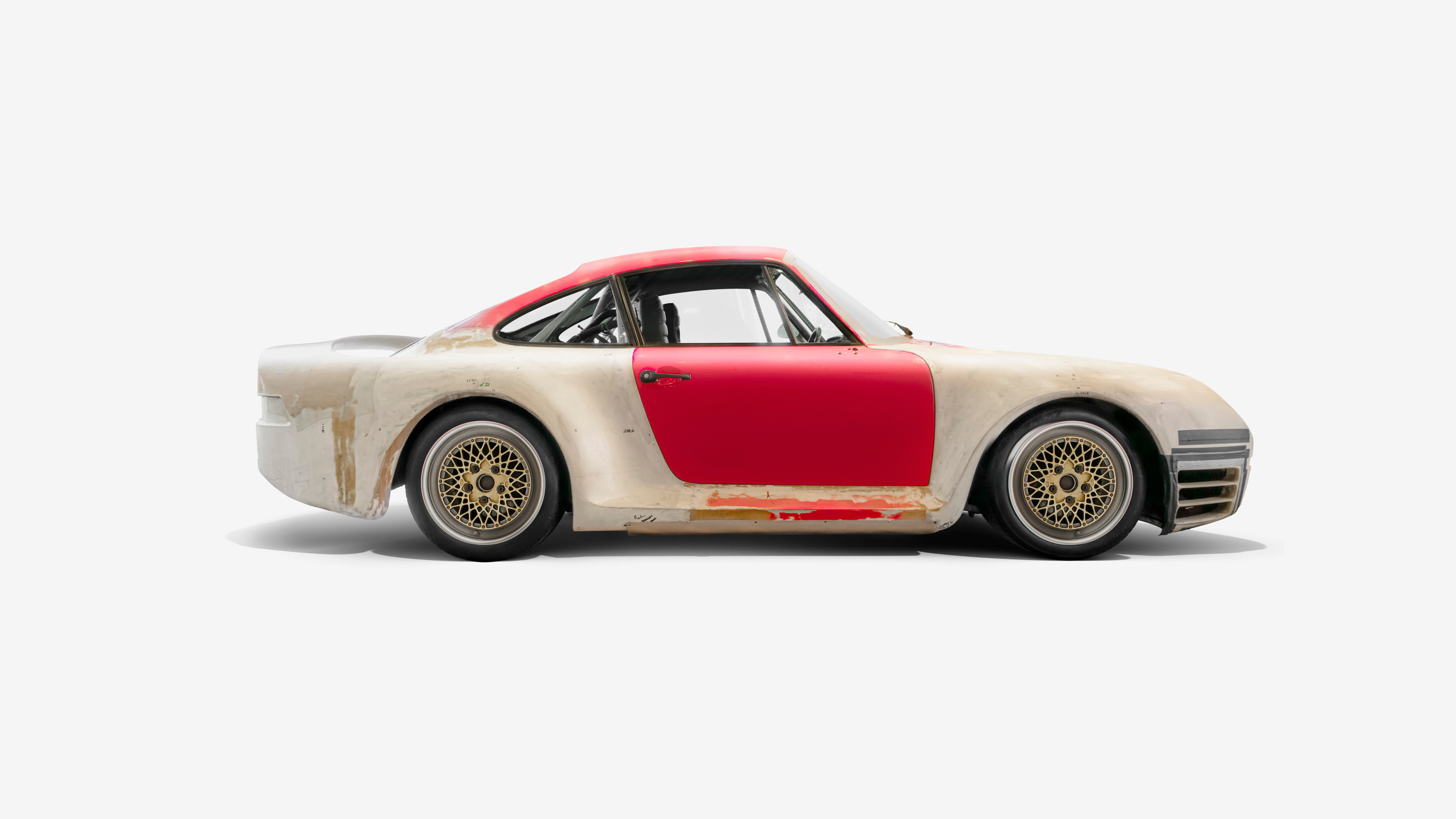 ‘Wundercar’ celebrates the ineffable aura of the Porsche 959, the first true hypercar
‘Wundercar’ celebrates the ineffable aura of the Porsche 959, the first true hypercarCurated by London creatives INK, ‘Wundercar’ is a London exhibition dedicated to the image and influence of Porsche’s seminal 959, a true icon of 1980s engineering
-
 The Porsche 911 Spirit 70 harks back to the aesthetic and ethos of the 1970s
The Porsche 911 Spirit 70 harks back to the aesthetic and ethos of the 1970sAs part of Porsche’s Heritage Design strategy, the company has launched a new special edition, the Porsche 911 Spirit 70 convertible
-
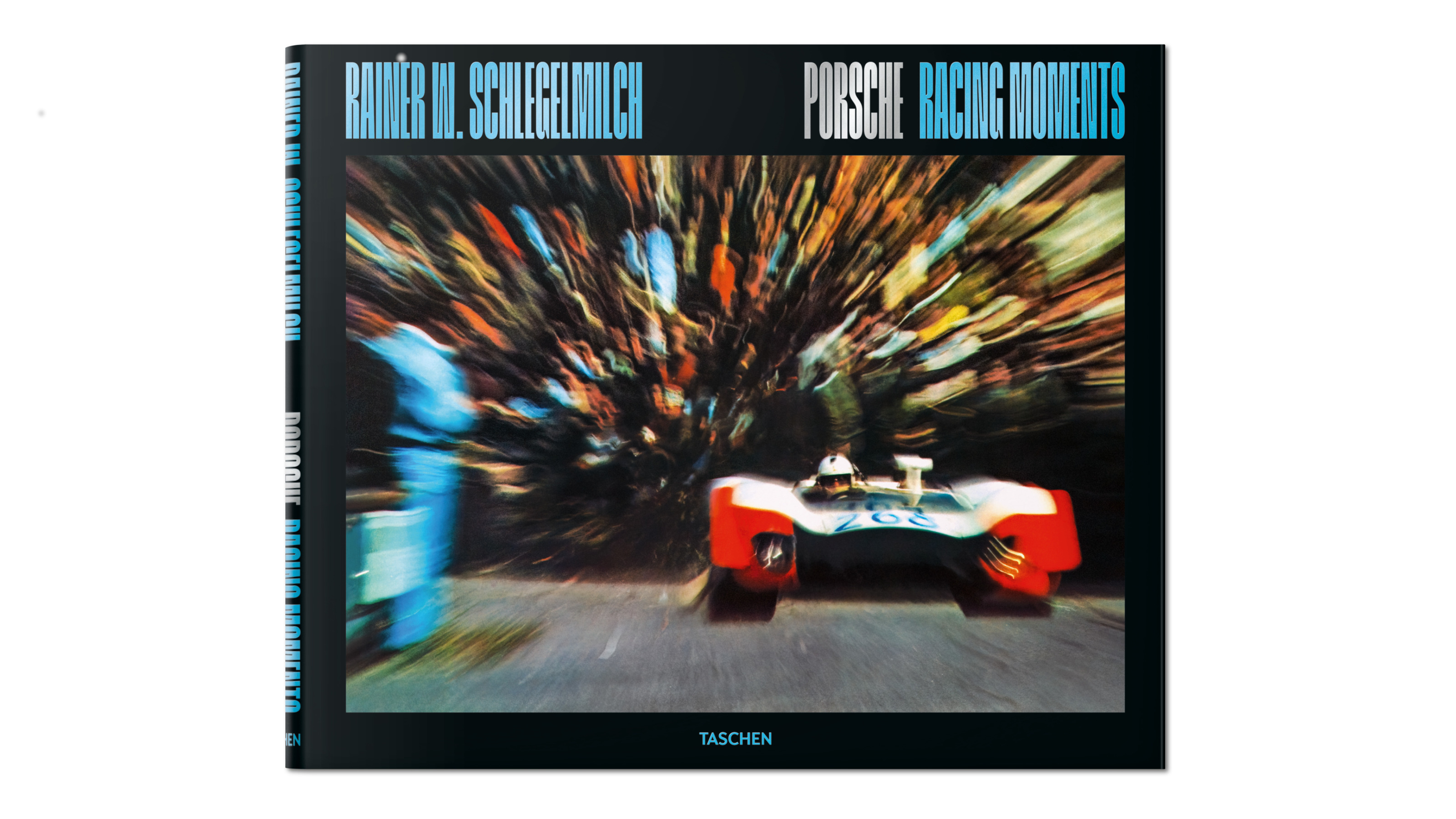 Rainer W. Schlegelmilch's Porsche photography showcases the aesthetics of speed
Rainer W. Schlegelmilch's Porsche photography showcases the aesthetics of speedTaschen's new edition of Rainer W. Schlegelmilch’s collected imagery from a quarter of a century spent following Porsche racing highlights historical machines, emotive camera technique and major moments on the track